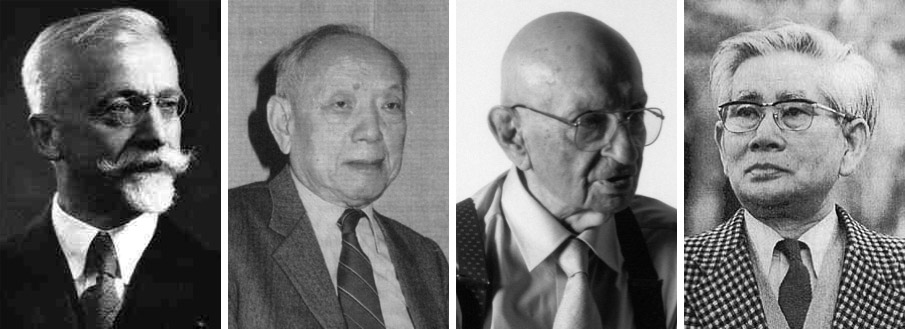

Finally, one has the nabla-calculus or the co-ordinate invariant calculus, which was thought of at Chicago by Koszul and fully developed there by Nomizu in the 19fifties. The importance of well designed formalisms may not be underestimated: for a geometer whose intuition is perfectly in tune with one of such formalisms, its playful use in doing research may sometimes be like interactive, in that it may sometimes like guide and inspire this geometer further then he would have imagined to be able to get in the first place or indicate new directions to be explored completely beyond his scope when starting to work. And though every geometer is at ease with each of the methodologies of his field, most geometers are inclined to favour one of the three when studying some problems which are neutral with respect to methodology; for instance, amongst the students of Cartan who became themselves leading geometers in their own right with remaining contributions to intrinsic and extrinsic
geometry, Yano and Rosca were champions in tensor calculus and in omega calculus, respectively.Based on the 1917 (pseudo-)parallel transport of Levi Civita (and Schouten, 1918), Riemannian geometry could be extended to the geometry of G-spaces –Chern, in particular, advocating as such Cartan’s “espaces generalises” which relate to the Lie-Klein group spaces (whose geometries concern the corresponding invariance theories) in a similar way as the Riemannian spaces non-holonomically relate to the Euclidean spaces –, the geometry of paths and the study of arbitrary connections in fibre bundles.
In some sense as farthest thinkable reasonable extension of Euclidean geometry up till now, after some two millennia of reflecting on the parallel postulate, one thus came to the study of the geometry of general connections on differential manifolds. In our present times, according to Chern, Riemannian geometry is the central topic in geometry.